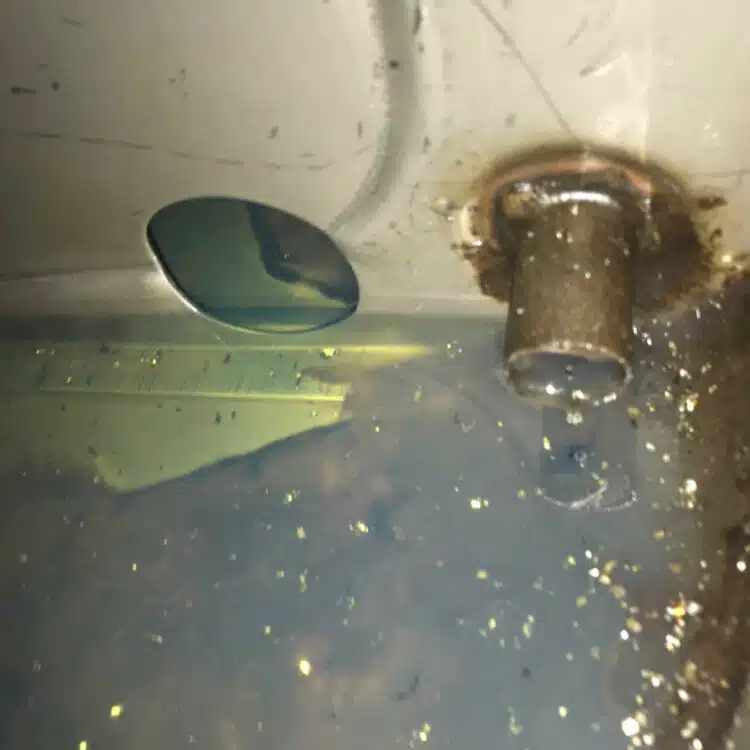As the summer draws to a close, it’s time to start thinking about winterizing your boats and yachts, because the tanks for diesel and gasoline in particular need special attention now. This applies to watercraft, but also to all other power equipment at home that runs on gasoline or diesel, because fuels do not last forever, contrary to popular belief. Just six months left unused in the tank can be enough to change the fuel properties of gasoline or diesel to the point where modern engines can be damaged. Three months – or rather 90 days – gasoline and diesel should retain their properties in the tank, according to the petroleum industry.

Tank hygiene the be-all & O
Therefore, the term “tank hygiene”, which is well known in professional circles, is particularly important for all those who want to start the coming spring carefree in the water sports season, or want to use their engines stored elsewhere for the winter, whether vintage car, convertible or lawn mower, boat or yacht.
Petrol and diesel: only 90 days guaranteed quality
Fuels are designed by the manufacturer accordingly to be consumed in a relatively short time either in the car or in the truck. For this reason, mineral oil companies do not pay particular attention to issues such as aging stability or bacterial growth (diesel plague), because seasonal use only affects a relatively small group of users and people tend to rely on their own precautions here, i.e. additives. The following is a brief attempt to explain what criteria should be considered when winterizing boats, yachts and other equipment powered by fuels such as gasoline and diesel.
Moisture via tank venting Diesel enemy number one
In any case, main enemy number one is moisture that enters the gasoline or diesel tank via the tank vent and condenses on the tank walls. This moisture promotes the growth of bacteria in diesel fuels and leads to diesel plague and, among other things, signs of aging in the diesel. Diesel blight can cause a brownish to black “sludge” that settles to the bottom of the tank and clogs fuel filters and possibly diesel injectors. But normal aging in diesel can also drastically reduce lubricity, which can damage fuel-lubricated components.
Rule number one: Fill the diesel tank completely before winterizing
Filling the diesel tank completely before winterization reduces the volume of air entering the tank and prevents moisture from entering the tank in larger quantities via the outside air, condensing as water on the tank walls and transferring into the fuel, where it then provides the perfect breeding ground for the spread of diesel plague.

Rule number two: Use additives when storing diesel
With the lack of entry of water, you have taken the first hurdle of proper winterization, but even during operation in the summer, moisture may have already spread in the diesel, which is not separated by the biodiesel content as before, but distributed throughout the tank contents. Therefore, it is recommended to use a biocide-containing additive to stop the possible spread of bacteria. Proven agents are Grotamar or Diesel Marine Protection. If you want to do something additional to combat diesel aging and loss of lubricity, you can use InSyPro from Deutz, for example.
Rule number three: fill the gasoline tank and additive it, too
The same applies to gasoline in the tank: prevention is better than repair. Here, too, the tank should be completely filled after the season in order to exclude water ingress via the tank vent as far as possible. However, there is still the possibility that moisture has accumulated in the tank during the season, which then condenses on both the tank pump and the high-pressure pump and leads to corrosion.
The changed surface structure increases the friction coefficients on the corroded components, which can lead to permanent damage. This can be prevented relatively safely with a gasoline stabilizer, such as that offered by Liqui Moly. It protects components exposed to gasoline from corrosion by coating them with a light lubricating film.
Important, however: Do not add the fuel additive only after winterization, but still drive with it for about 15 minutes, so that all sensitive parts of the fuel system are protected accordingly.
Rule number four: In diesel pest infestation helps only tank cleaning
One thing – contrary to many assurances of the manufacturers – the additives do not manage, however: If you have significant amounts of diesel pest already in the tank, only a tank cleaning helps, such as MFT microfilter technology offers every spring also in Croatia and Italy. For SeaHelp members even to advantage conditions. About the next dates of the spring route to Italy and Croatia of the tank cleaning professionals we will inform accordingly here. But prevention with additives is still better than cleaning.
No guarantee with fuel aging symptoms
In general, however, you should be aware that newer, emission-optimized engines in particular also require significantly better fuel quality, and in the event of damage during the warranty period, the first thing manufacturers do is take a fuel sample. If the no longer corresponds to the DIN standard, so DIN EN 228 for gasoline and DIN EN 590 or DIN EN 15940 for diesel in accordance with the operating instructions, the warranty on the corresponding damaged components may be voided. Then it becomes really expensive.

Special position tanks up to 150 liters
In the case of smaller tanks for gasoline or diesel – according to the conditions on the boat or yacht – it may also make sense to completely empty the tank in the fall, clean it in the spring and then refill it with “fresh” gasoline or diesel.
Caution with the product group of enzyme additives
And still supplementary on the subject of additives: years ago, a laboratory test was reported regarding the efficacy of enzyme additives. Nothing has fundamentally changed here. The petroleum industry continues to advise the use of proven agents with proven protection, some of which common products have been listed in this article without claiming to be exhaustive.
Conclusion on the storage of fuels
Who leaves fuels such as gasoline or diesel longer than 90 days in the tank, operates with it in the linguistic usage of the mineral oil industry a so-called special use. Then one should additivieren accordingly. The industry spares itself these additives for cost reasons, because it assumes that gasoline and diesel should be used up from the tank within this period. For certain types of gasoline and diesel, a longer shelf life is guaranteed, but in the end the owner cannot verify this in a reliable way. Therefore, one should always be on the safe side, so that there are no nasty surprises in the spring after winterization.

Mit dem Laden des Videos akzeptieren Sie die Datenschutzerklärung von YouTube.
Mehr erfahren













